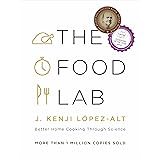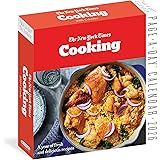As the final vestiges of winter cling to the calendar, many of us yearn for the lengthening days and the promise of spring’s warmth. Yet, there remains a distinct pleasure in embracing the lingering chill with a bowl of something profoundly comforting and delicious. I distinctly recall one particularly blustery March evening, the kind where the wind howls a last defiant roar, and all I craved was warmth from the inside out. It was on such an evening that I began to truly appreciate the transformative power of a hearty, aromatic soup—especially when crafted with wholesome, plant-based ingredients. The culinary journey outlined in the video above offers a quintet of such culinary delights, each designed not just to nourish the body, but to soothe the soul during these transitional weeks. These aren’t merely recipes; they are invitations to savor the season, explore global flavors, and perhaps even clean out your pantry in the process, all while adhering to a budget-friendly, vegan ethos.
Crafting exceptional plant-based cuisine, particularly comforting dishes like soups, necessitates an understanding of ingredient synergy and technique. The recipes shared here, ranging from a vibrant roasted tomato soup to a complex Korean stew, exemplify how simple vegetables and legumes can be elevated into sophisticated, deeply satisfying meals. Furthermore, mastering these preparations allows home cooks to confidently navigate dietary preferences without sacrificing flavor or nutritional value. Consequently, embracing these warming vegan soups not only provides delicious meals but also fosters a more resourceful and experimental approach in the kitchen, proving that plant-forward eating can be both accessible and profoundly gourmet.
Roasted Tomato and Basil Soup: A Homage to Comfort
There are few pairings as classic and universally beloved as tomato and basil. The video highlights a roasted tomato and basil soup, a preparation that intensifies these flavors to an exquisite degree. Roasting tomatoes, alongside onions and garlic, transforms their natural sugars, imparting a profound depth and subtle sweetness that simply boiling cannot achieve. This foundational step, executed at a robust 425 degrees Fahrenheit for approximately one hour until the vegetables are caramelized and tender, is crucial for developing the rich umami profile essential for a truly outstanding soup. The specific guidance of using between two and three pounds of Roma tomatoes, or a variety, underscores the recipe’s flexibility, allowing adaptation based on what is readily available or needs to be utilized.
Moreover, the integration of thickening agents in vegan soups is a cornerstone of achieving desirable textures without relying on dairy. Traditionally, this recipe might call for cashew cream, which yields a velvety richness. However, a more budget-conscious and protein-boosting alternative, as explored in the video, involves using a can of white beans. These legumes not only contribute a creamy mouthfeel but also significantly enhance the soup’s nutritional completeness, offering soluble fiber and essential amino acids. The choice to include a chicken-style bouillon cube, despite the soup being vegan, is an astute maneuver to amplify umami, demonstrating a sophisticated understanding of flavor building that transcends conventional ingredient categories. Ultimately, serving this robustly flavored soup with a crispy vegan grilled cheese sandwich elevates it from a simple meal to an iconic comfort food experience, echoing familiar nostalgic flavors.
Spiced Chickpea Stew with Coconut and Turmeric: A Global Culinary Gem
Alison Roman’s Spiced Chickpea Stew, a dish that gained significant traction during the early days of the pandemic, represents a vibrant exploration of Middle Eastern and Indian-inspired flavors within a hearty, stew-like consistency. This recipe, expertly adapted for vegan preparation, showcases the versatility of chickpeas as a central protein source. The initial step of pan-frying the chickpeas in olive oil with chopped onions, fresh minced ginger, and garlic is pivotal; it not only develops a beautiful golden-brown exterior but also releases starches, which subsequently contribute to the stew’s natural thickening capabilities. As the video notes, employing a non-stick skillet for this stage can mitigate issues of sticking, particularly with starchy legumes, a common challenge in high-heat cooking.
Furthermore, the careful management of spices, especially turmeric, is paramount to the stew’s success. While turmeric offers earthy warmth and a stunning color, using it judiciously prevents bitterness. Feedback from experienced cooks, particularly those of Indian heritage, frequently suggests reducing the recommended quantity by about half to achieve optimal balance. The addition of full-fat coconut milk provides a luxurious richness, though for those seeking a lighter profile, or for individuals sensitive to overly rich foods, a half-and-half approach with light coconut milk or vegetable broth can be considered. Integrating greens like kale or Swiss chard towards the end ensures their nutritional integrity and a pleasant textual contrast. Ultimately, garnishing with reserved crispy chickpeas and serving alongside basmati rice transforms this stew into a complete, deeply satisfying meal that balances spice, creaminess, and wholesome plant-based goodness.
Vegan Avgolemono Soup: A Lemony Greek Revelation
Avgolemono, a classic Greek chicken soup renowned for its creamy, lemony, and subtly rich character, presents an exciting challenge for vegan adaptation. The version highlighted in the video, drawing inspiration from The Vegan Cocotte blog, ingeniously substitutes traditional animal products with plant-based alternatives to achieve a remarkably similar flavor and texture profile. This preparation begins with a mirepoix of chopped celery, carrots, and onions, sautéed until translucent, which forms the aromatic foundation. The subsequent addition of minced garlic, oregano, and thyme infuses the broth with herbaceous notes, though opting for dried herbs when fresh are unavailable is a practical and effective strategy for home cooks.
Conventionally, Avgolemono relies on eggs to achieve its signature silky texture and richness; however, this vegan iteration deftly employs tahini, a sesame paste, to mimic these qualities. Whisking tahini with fresh lemon juice and a touch of vegetable broth creates a luscious emulsion that, when gently incorporated into the hot soup, thickens it beautifully and imparts a unique nutty depth. The use of chickpeas as a stand-in for shredded chicken not only maintains the soup’s heartiness but also significantly boosts its protein content, aligning with a focus on whole plant foods. Cooking orzo directly in the broth, a common technique, further contributes to the soup’s body as the pasta releases its starches. The final additions of fresh spinach, allowed to wilt gently to preserve its vibrant green hue, and a generous amount of fresh dill elevate this Avgolemono adaptation into a truly fragrant and comforting experience, offering a delightful foray into Greek cuisine.
Vegan Sundubu Jjigae: Spicy Korean Soft Tofu Stew
Exploring global flavors further, the vegan Sundubu Jjigae offers a robust and spicy Korean soft tofu stew, drawing inspiration from the Cheap Lazy Vegan’s popular recipe. This dish is characterized by its comforting heat, delicate silken tofu, and a complex broth built upon umami-rich ingredients. The foundation of this stew is a kelp broth, meticulously prepared by steeping kombu seaweed and dried shiitake mushrooms in boiling water. This method extracts profound umami, creating a depth of flavor that a simple vegetable broth cannot replicate. For those without access to an Asian market for kombu or shiitake, the all-purpose umami seasoning Yondu, readily available online, serves as an excellent, time-saving substitute for creating a quick dashi-like broth.
The stew’s distinctive spiciness comes from gochugaru, Korean red pepper flakes. While the narrator acknowledges a bag purchased years prior might have lost some of its vibrant red, its potency in flavor and heat often endures. The careful sautéing of diced onions and garlic with gochugaru establishes a fragrant, spicy base before vegetables like zucchini and various mushrooms—king oyster, shiitake, or Bunashimeji—are introduced. These diverse fungi contribute not only textural intrigue but also their unique earthy and sometimes sweet notes, enriching the overall profile of the stew. The soft tofu, ideally a tube-style variety, breaks apart into creamy, delicate curds, absorbing the rich, spicy broth. Finishing the stew with toasted sesame oil and fresh scallions adds layers of aromatic complexity, making this Sundubu Jjigae a deeply satisfying and invigorating plant-based meal, particularly when paired with steamed rice or, as ingeniously suggested, ramen noodles for an extra hearty experience.
Vegan “Fridge Cleanout” Noodle Soup: Resourceful and Revitalizing
The concept of a “fridge cleanout” soup epitomizes resourceful cooking, transforming seemingly disparate leftover ingredients into a cohesive, delicious meal. The final soup featured in the video is a prime example: a vegan chicken noodle-style soup, born from the necessity of utilizing celery, carrots, potatoes, and kale. This approach not only minimizes food waste—a critical aspect of sustainable cooking—but also encourages creativity and adaptability in the kitchen. Starting with a classic mirepoix sautéed in olive oil or vegan butter builds a robust flavor base, while cubed Russet potatoes add body and a comforting starchiness to the broth. The choice of Better Than Bouillon No Chicken Base is particularly effective here, as it delivers a concentrated, savory chicken-like flavor profile without any animal products, enhancing the umami of the soup.
Incorporating hardy greens like kale, while sometimes met with mixed opinions, provides significant nutritional value and a pleasant bitterness that can complement the other flavors. For those who find kale too assertive, spinach offers a milder alternative, wilting quickly into the hot broth. The addition of cooked pasta and rehydrated soy curls further elevates this dish from a simple vegetable soup to a substantial, protein-rich meal. Keeping these components separate until serving allows individuals to customize their bowls, ensuring neither the pasta nor the soy curls become overly saturated or mushy. Ultimately, this “fridge cleanout” vegan noodle soup showcases how thoughtful preparation and ingredient selection can result in exceptionally cozy vegan soups that are both economical and deeply nourishing, perfect for those last few weeks before spring definitively arrives.











